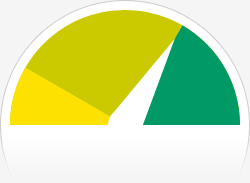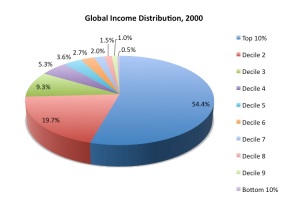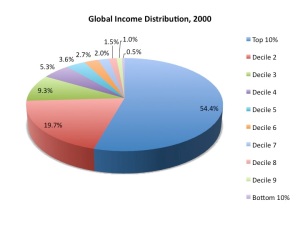After a while in the making, I wrote up a PhilanthroPhotos “business plan”. It details the ideas of a new business that seeks to recruit budding photographers to utilize their photographs for philanthropy.
If you’re in a rush, read the summary only. Any and all feedback is greatly appreciated via comments or email. A downloadable version can be found here. I want to make this happen, but would love input from others.
PhilanthroPhotos Business Plan (1/28/11)
PhilanthroPhotos: Photographs for a Cause.
Summary:
PhilanthroPhotos is a non-profit social business idea that seeks to spotlight budding photographers while selling photo products that support a charitable cause. The company will sell framed prints, calendars, coffee table books etc. using donated photographs and each product will include a gift card to an organization such as GlobalGiving (where consumers will be able to donate to a charity of their choice) or a local non-profit partner. A website will spotlight the contributing photographers (and aggressively market their personal websites), and all products will take advantage of cause-marketing. Essentially, PhilanthroPhotos will do all the professional services (editing, printing, framing, marketing) that amateurs wish to avoid because of the time and expense, while also allowing professional photographers to donate their artwork to a good cause and expand their marketing.
Mission:
The mission of PhilanthroPhotos is two-fold:
1) Spotlight budding photographers
The work of contributing photographers will be prominently featured in a professional product. For many amateurs, this may be their first opportunity to see their work disseminated to consumers. For young professionals, this could simultaneously help bring heavy exposure to their photograph collection while empowering them to use their photos for philanthropy.
2) Recruit consumers to donate to charity
With each product purchase, the consumer will receive a gift card that can be donated to a charity of his or her choice. This will not only help support other non-profit organizations, but also expose consumers to the ease of online fundraising outlets such as GlobalGiving.
PhilanthroPhotos will also prioritize complete transparency in all of its business operations: all budgets, costs, revenues, and marketing decisions will be published online. In this way, it will be open to criticisms and suggestions to ensure optimal efficiency and cost-effectiveness. PhilanthroPhotos hopes to achieve the highest standards of transparency and accountability.
Non-profit Status:
The organization will seek non-profit status to ensure a maximal amount of revenues will go to other charities. The charitable involvement will incorporate three consumer options:
1) Included gift cards to a charity network (for online purchases)
Part of the cost of each product will include a set gift card amount that will be delivered to the consumer. For example, if the consumer purchases a $50 coffee table book, $35 may go to cover production costs while the remaining $15 will go to cover the cost of a gift card. The gift card will allow the consumer to donate online (to a site such as GlobalGiving.org) and personally choose a charity to support.
2) Support local charities (for local events)
The products can also be sold as fundraising items, with all proceeds supporting local non-profits. For example, the product may be sold at a silent auction for a non-profit gala event, or as a general fundraising effort for 501(c)3 organizations.
3) Support the photographer’s chosen charity (for purchases of some framed prints)
If the photographer has a specific charity of interest, (s)he may suggest all proceeds of his or her framed photographs go to a specific organization.
Cause-marketing has created some welcome debate within the philanthropy realm (Stanford Social Innovation Review 2009, Selfish Giving 2009). The major criticisms are that cause-marketing distracts consumers from the issues, distances donors from their beneficiaries, and fails to address the fact that methods of cheap production often produce many of the social problems that charities try to fix. By offering GlobalGiving gift cards, PhilanthroPhotos seeks to overcome these potential disadvantages by empowering consumers to give on their own terms, to see the projects that non-profits are working on, and to choose their own beneficiaries.
Products:
As an organization, PhilanthroPhotos will collect, evaluate, and edit photographs and produce a limited menu of items that will be sold online, in local auctions, and in local fundraising events. Successful products will likely include professional coffee table books, photo calendars, and professional prints. With greater market research, other items may be included.
Coffee table books will be designed by PhilanthroPhotos staff and then submitted to an online photobook production company. Possible suppliers include Lulu, Blurb, MixBook, VioVio, and MyPublisher. Orders will be made in bulk and products will be sold at the cost of production plus the cost of the charitable gift card. Estimated price of production is currently between $20-$60, depending on size, paper quality, and quantity purchased.
To develop professional prints, PhilanthroPhotos will likely develop a partnership with a local photography production company though will seek opportunities to outsource printing, framing, and shipping at low cost.
Talent Recruitment:
PhilanthroPhotos will recruit amateur and professional photographers who are willing to “donate” non-exclusive rights to use of photographs to the PhilanthroPhotos company. Ideal candidates for contributing photographers are amateur photographers who produce high-quality photos but do not want to take the time to edit, frame, market, or sell their art. Professional photographers may also be willing to donate limited rights to their photographs for a charitable cause.
For amateur photographers, PhilanthroPhotos will offer to print, frame, and market the photographic art at market prices with all profits going to GlobalGiving gift cards or the charity of the photographer’s choice.
For professional photographers, PhilanthroPhotos will offer the same services (if preferred) or will use the photographs in compilation products such as coffee table books. The central website will clearly link to the professional’s website if the consumer would like to buy individual prints.
All contributing photographers, regardless of their professional level, will benefit from the widespread distribution of their artwork and a new venue for advertising both their talent and their goodwill.
Photo contests will also be a key method of obtaining high-quality photographs. By offering a cash reward, PhilanthroPhotos will receive photo entries that can be used in future products. Part of the contest agreement will stipulate that non-exclusive rights will be granted to the PhilanthroPhotos corporation.
Marketing:
The final product is a social good and will be marketed as such. One consumer behavior study conduced by Cone showed “cause-related marketing can exponentially increase sales, in one case as much as 74 percent, resulting in millions of dollars in potential revenue for brands.” According to the study, Americans want more cause marketing: 83% of Americans said that they wish more of the products, services and retailers they used would support causes.
Additionally, cause-marketing increases value. One in five consumers will pay more for a cause-related product. A cause will prompt 61% to try a product they’ve never heard of. And a great majority (80%) of consumers say they would switch to a brand that supports a cause when price and quality are equal. [Thanks to Selfish Giving for the great summary.]
Certificate of charitable authenticity, social branding, and other strategies employed through cause marketing will be utilized. Ideal consumers will be interested in the product because of its social mission and because the product can be clearly displayed as a reminder of the charitable purchase.
Customers will be exposed to the prints and products through art galleries, coffee shops, word of mouth in the non-profit community, Internet advertizing, and other sources of advertisements.
The Current Market / Competitors:
1) Similar products = Photo coffee table books
There are plenty of great travel photo coffee table books out there. National Geographic and Lonely Planet offer two of the most well known. PhilanthroPhotos products would distinguish themselves from this market through social advertizing and cause marketing
- Amazon.com list of world photos through coffee table books:
http://www.amazon.com/World-Photos-Coffee-Table-Galore/lm/R2TA7A5PCRQK4K?tag=bfac-20
- Barnes and Noble page featuring coffee table books:
http://www.barnesandnoble.com/u/Art-Photography-Architecture-Books/379001269/
2) Similar cause marketing organizations
Many cause marketing organizations sell items ranging from t-shirts to bracelets to iPods.
3) Similar cross-over products
The one social-cause photo book that I know of is Blue Planet Run’s incredible coffee table book. They charge $30 for their book and still manage to donate proceeds to a terrific cause. (And what a cause it is.) I’m currently unsure about their exact expenses but I am looking into it.
PhilanthroPhotos will aim to eventually have similar distribution and cost-structure as the Blue Planet Run book, but will also offer printing, framing, and marketing services to amateur photographers in a way that allows them to “donate” their photographic art to a good cause. PhilanthroPhotos will distinguish itself from companies like Blue Planet Run by offering an additional service to budding photographers: the opportunity to distribute their art while participating in a social enterprise. In this way, PhilanthroPhotos will assist photographers in expanding exposure to their work, catalyze photographers’ ability to support non-profit organizations, and appeal to consumers that have charitable interests other than water scarcity.
Example Budget for Coffee Table Book Production:
| EXPENSES |
Cost |
Notes |
| PRODUCTION COSTS |
|
|
| PhotoBook Printing |
$35 |
per book (*PP will also seek in-kind donations to reduce this cost) |
| Charity GiftCard |
$15 |
per book |
| Production Total |
$50 |
per book |
| ADVERTISING COSTS |
|
|
| Website Maintenance |
$125 / yr |
Register.com e-commerce business account |
| Demo Samples |
$175 |
5 samples at $35 ea. |
| Direct Mailing Postcards (or other form of ads) |
$500 |
Estimates for 1000 postcards w/ mailing |
| Advertising Total |
$800 |
|
| START UP COSTS |
|
|
| Photo Contest |
$500 |
Prize money for talent recruitment |
| Legal filings |
$500 |
501(c)3 fees, state fees, other forms |
| Website Design |
$500 |
|
| Product design |
$200 |
Involves designing photo products |
| PO Box |
$50 / yr |
|
| Start Up Costs Total |
$1250 |
|
| Total Not-Production Costs |
$2050 |
Advertising + Talent + Start-up |
For 250 books, the non-production costs will equal $2050 / 250 = $8.20 per book, suggesting a total price of around $60 to the consumer. With other revenue sources, including prints and other photo products, the non-production costs (e.g. advertising) will be distributed across products and therefore may decrease the price to consumers.
According to this budget, if 250 books can be sold at $60, then PhilanthroPhotos will break even and $3,750 will be donated to charities. With further research, PhilanthroPhotos believes that it can decrease the total cost of production (therefore decreasing costs to consumers) and increase the volume of sales.
Other ideas for consideration (An open bleg to all opinionated readers):
- Themed photo books? (e.g. Southwestern landscape, Yale University, forestry)
- Other photo products? (e.g. calendars, mugs, posters, stretched canvas, coasters)
- Art other than photographer? (e.g. paintings, graphic art)
- Corporate sponsors? Subtle ads or a Sponsorship page printed in each book?
- “Featured cause” pages (informational pages on global issues within each book)
- Connect with college networks (as a fundraiser program)
- Recruit local sponsors for in-kind donations to reduce production costs?
- Limit contributing photographers to amateurs? students? locals? professionals?
- Better tagline?



 Posted by justinberk
Posted by justinberk 





